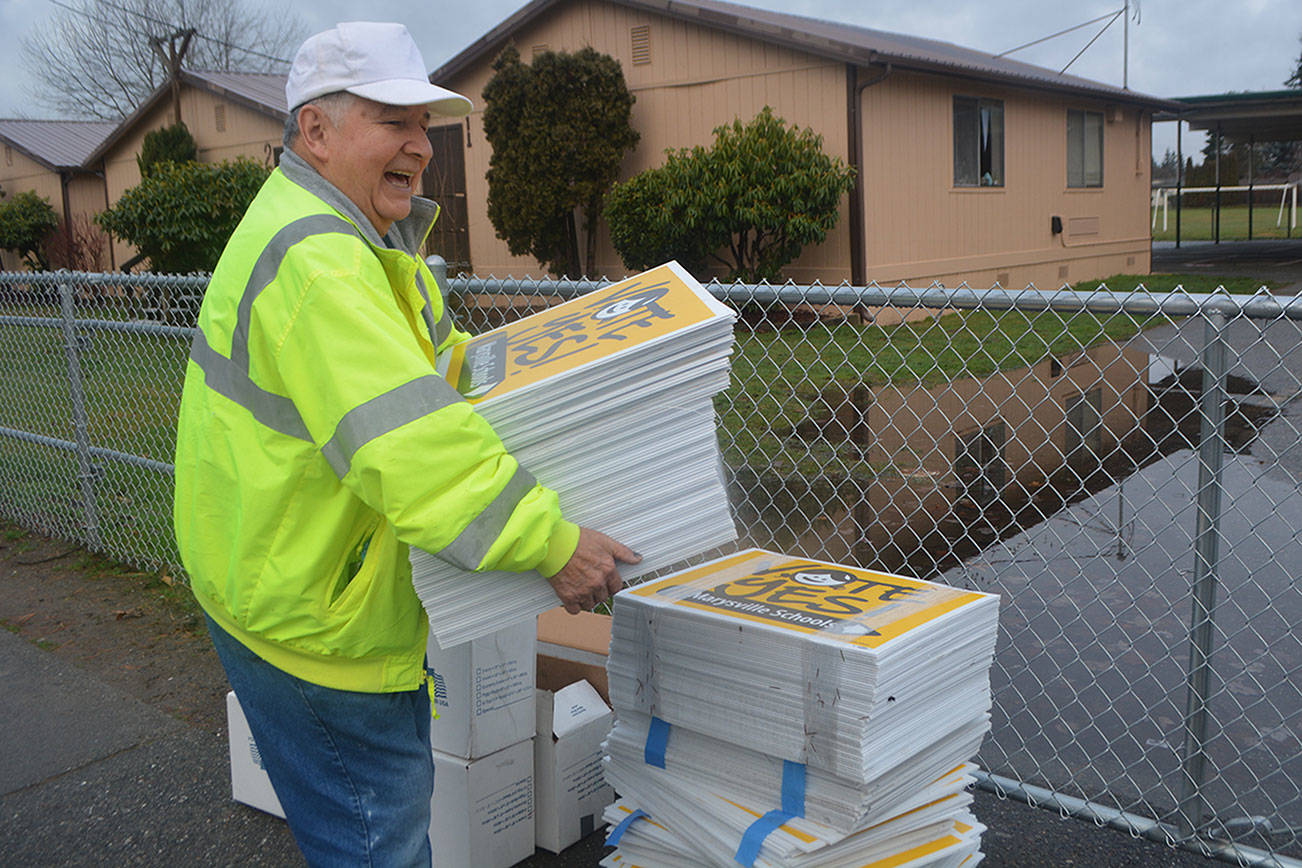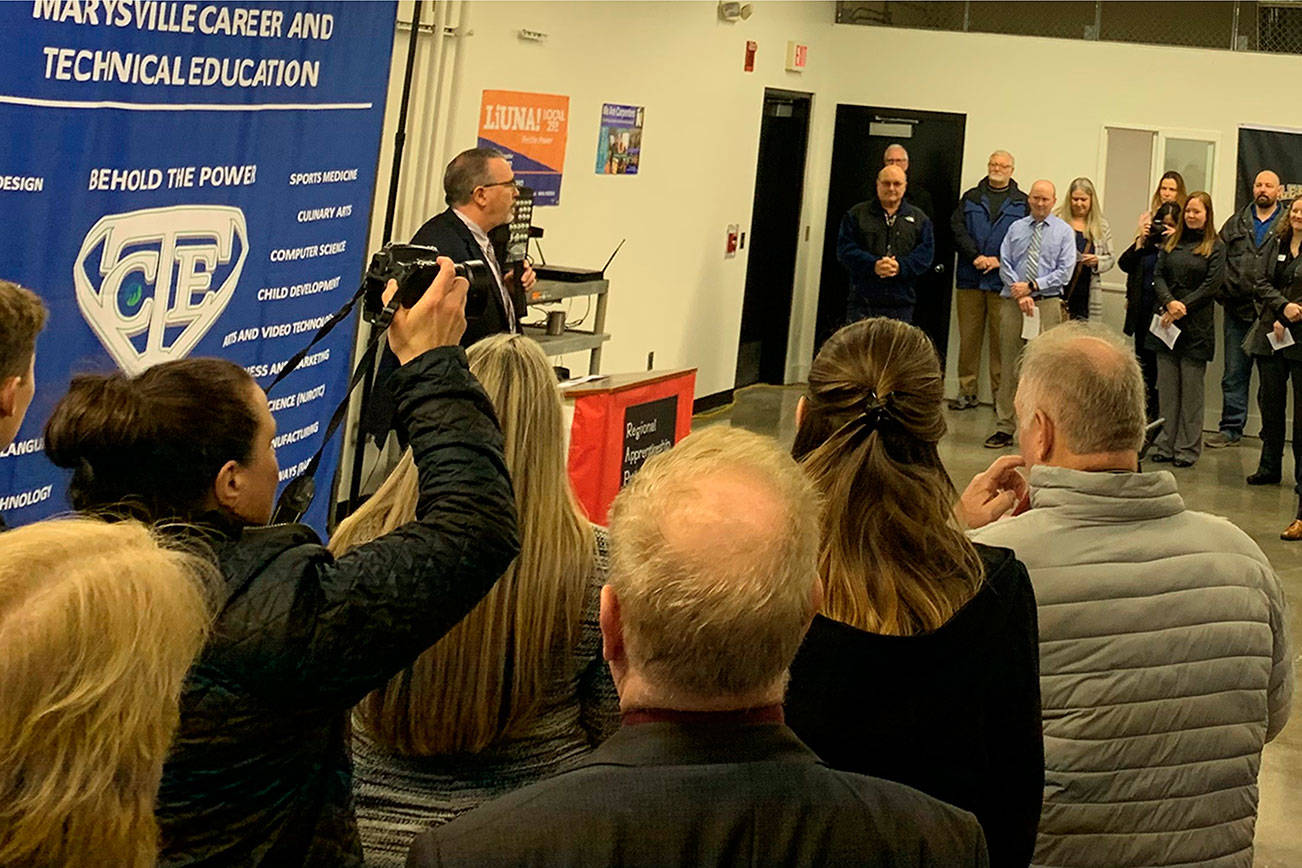MARYSVILLE – The health of the city, or rather the unhealthy part of it, was spotlighted in two presentations to the City Council at Monday’s work session.
Administrator Jeff Ketchel of the Snohomish Health District and consultant Heather Logan of the county’s Opioid Response Multiple Agency Coordination group talked about everything from drugs to measles.
Logan said Snohomish County Executive Dave Somers a year ago called the opioid epidemic an emergency. Somers reiterated that edict last week for the coming year.
There have always been homeless and drug issues, but the edict came about because while the county has 10 percent of the state’s population, it has 18 percent of its overdoses. The overdoses are of all ages, with six under age 11 and 13 over age 90. “The problem’s not going away,” Logan said.
After the edict of Somers, cities and the county worked together on commonality.
“It was painful,” she said, because agreeing on methods meant some folks couldn’t continue to do things the way they had for 17 years.
Now that there is a consistent standard, they can release some valid statistics.
The Marysville social embedded worker team of Rochelle Long and officer Mike Buell made 914 encounters from May through October. Many of their encounters have been in the Marysville or county jail in Everett, “where they are a captive audience,” Logan said. Others have been in the streets or in homeless camps.
The number who have been housed is 37, and 19 have made it all the way through treatment.
Even with all the success, Logan said more work needs to be done. “The population changes,” she said of the homeless. “They are very mobile.”
In other words your clients are constantly changing.
Of those who stick around, “Some are not ready” to end addiction, she said, adding two of three relapse within the first few months.
To those folks, she said even though they stumble, they did not fall “down the Grand Canyon.” They can still get sober.
One way to keep opioids in the “medicine cabinet out of the wrong hands” is through the drug take-back program. Logan said Marysville led the county in that effort taking in 343 pounds of drugs.
The Marysville School District is looking into an opioid curriculum to educate students about the issue.
As for resources to help, Logan said inmates are now getting a resource card when they get out of jail. In Everett there is the recently opened Diversion Center, where people can “recover right here in Snohomish County,” Logan said.
She added that unfortunately the 44-bed center already was at capacity for the first time last Friday.
But there are other programs.
Logan said about one-third of the people who use the Arlington Resource Center live in Marysville.
There is also the new Carnegie Resource Center in Everett, which was set to open this week.
Meanwhile, Ketchel mentioned some similar efforts in his presentation.
Opioids are a huge problem, so much so that the life expectancy in this country is declining, due to overdoses and suicides mostly, he said.
He added the district is working with pharmacists, dentists and even veterinarians to try to keep tighter controls on painkillers. They have developed a pamphlet on opioid prevention.
But much of what he has done in his first year is try to improve the image of the district. There have been dozens of quality improvements in systems, records and the website – to the point the district is seeking accreditation.
“We’ve been rebuilding in 2018, similar to what the Mariners are going through” now, he said of Seattle’s baseball team.
While state funding is increasing, Ketchel said the district is asking for $296 million more. He asked Marysville to encourage its legislators to support the district. Ketchel ended his talk by asking that Marysville again support the district financially.
This Monday, the City Council will likely consider that request and others, including:
•spending $200,000 more on a $900,000 water-well-drilling project south of Walmart near Highway 9. The drilling is at 960 feet, and, “We want to go further,” Public Works director Kevin Nielsen said. “We gotta get to bedrock.” If they drill another 350 feet, he said it should produce 1,000 gallons of water a minute, which is the goal.
•spending almost $241,000 to complete design by spring on the Olympic View Park project.
•rezoning property near the First Street Bypass to allow developments similar to downtown. Also rezoning property south of Ebey Slough to allow downtown commercial-type development since it will become the new gateway to the city when the Highway 529 intersection is built at I-5.
•voting to receive grants of over $505,000 for an enhanced sweeper program, along with a more than $168,000 match, and almost $37,000 for emergency management.
•voting to spend more than $15,000 on a traffic signal at 80th. Also look at receiving additional funding for State Avenue from 3rd to 80th.







